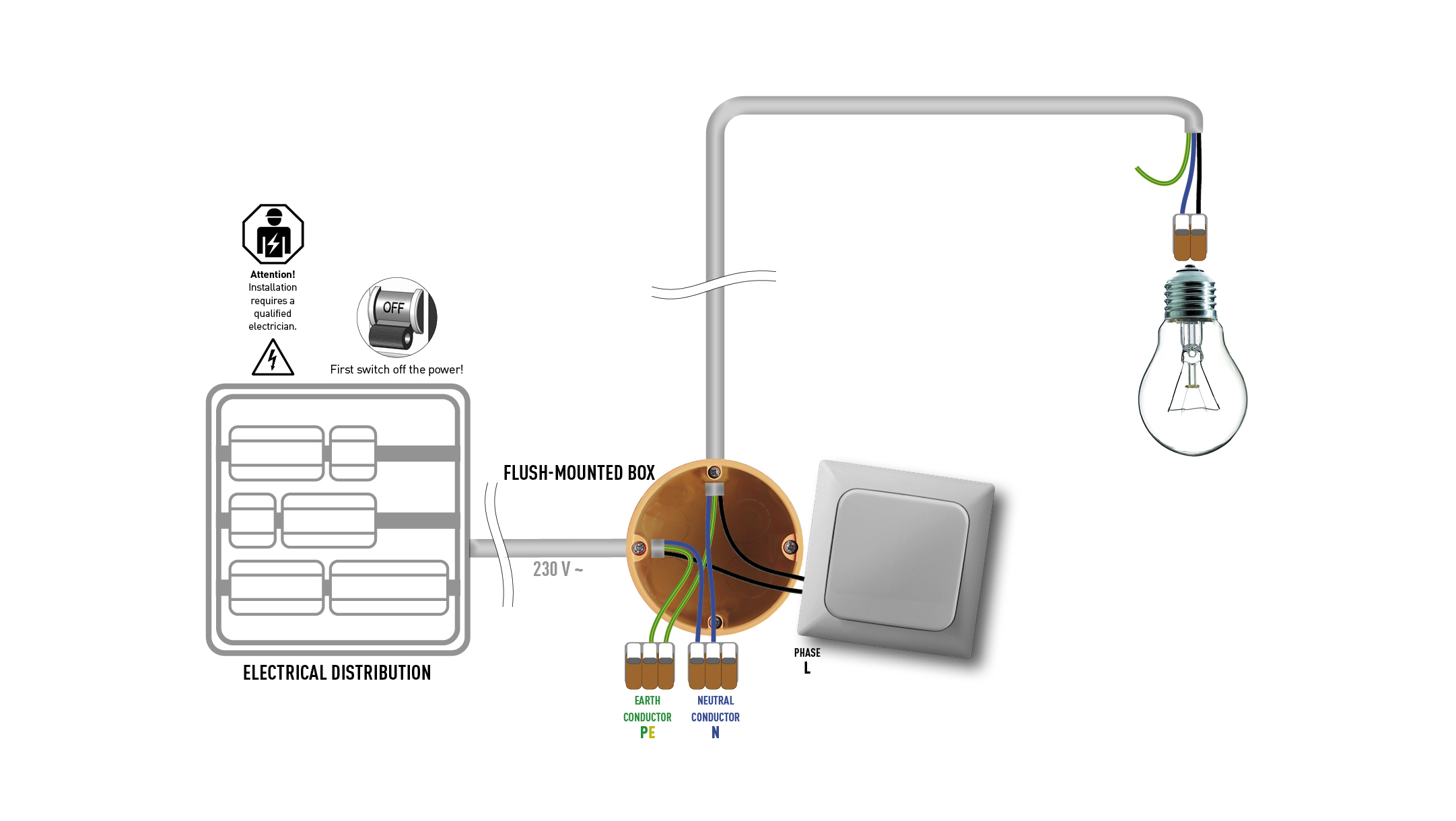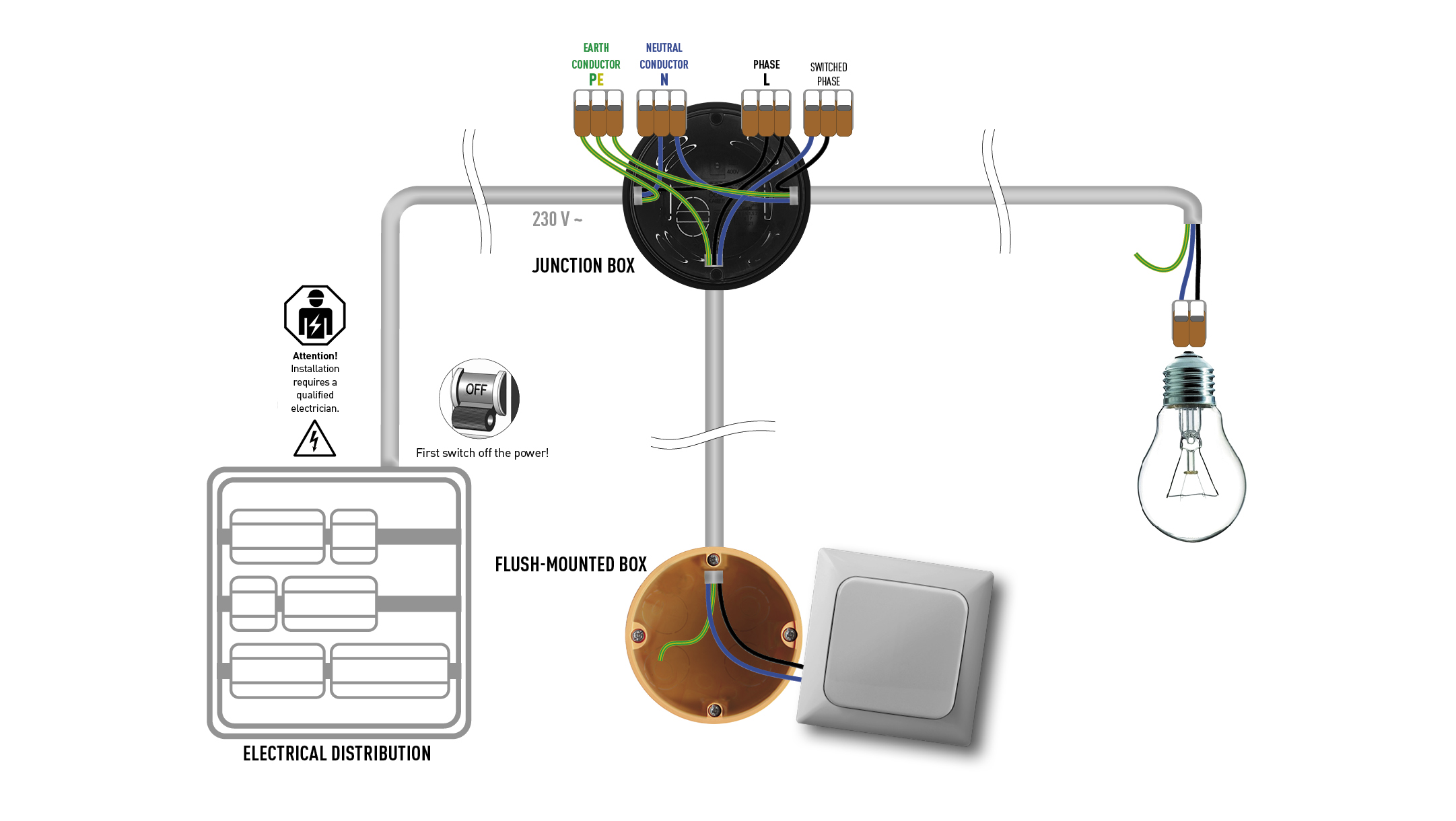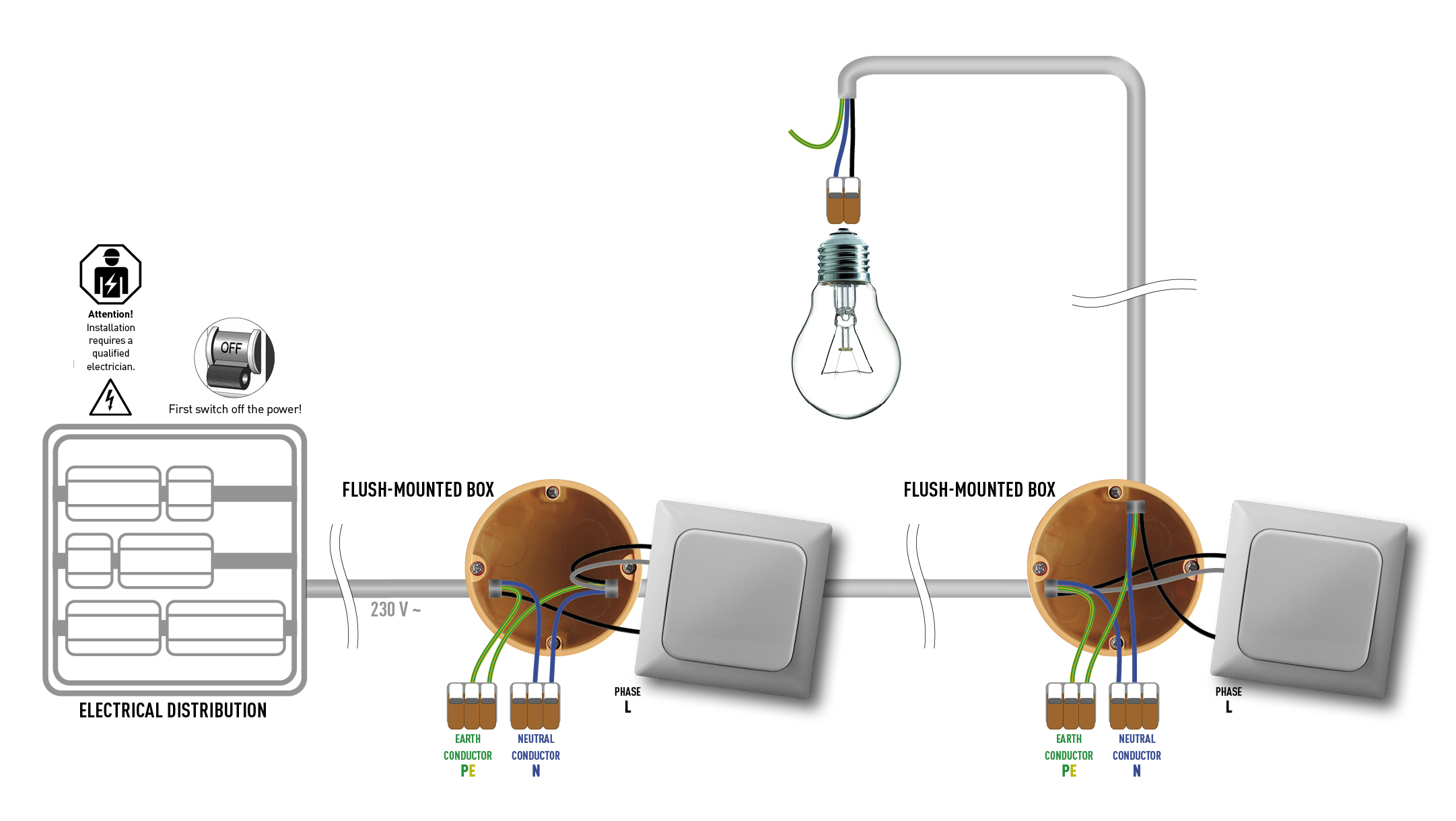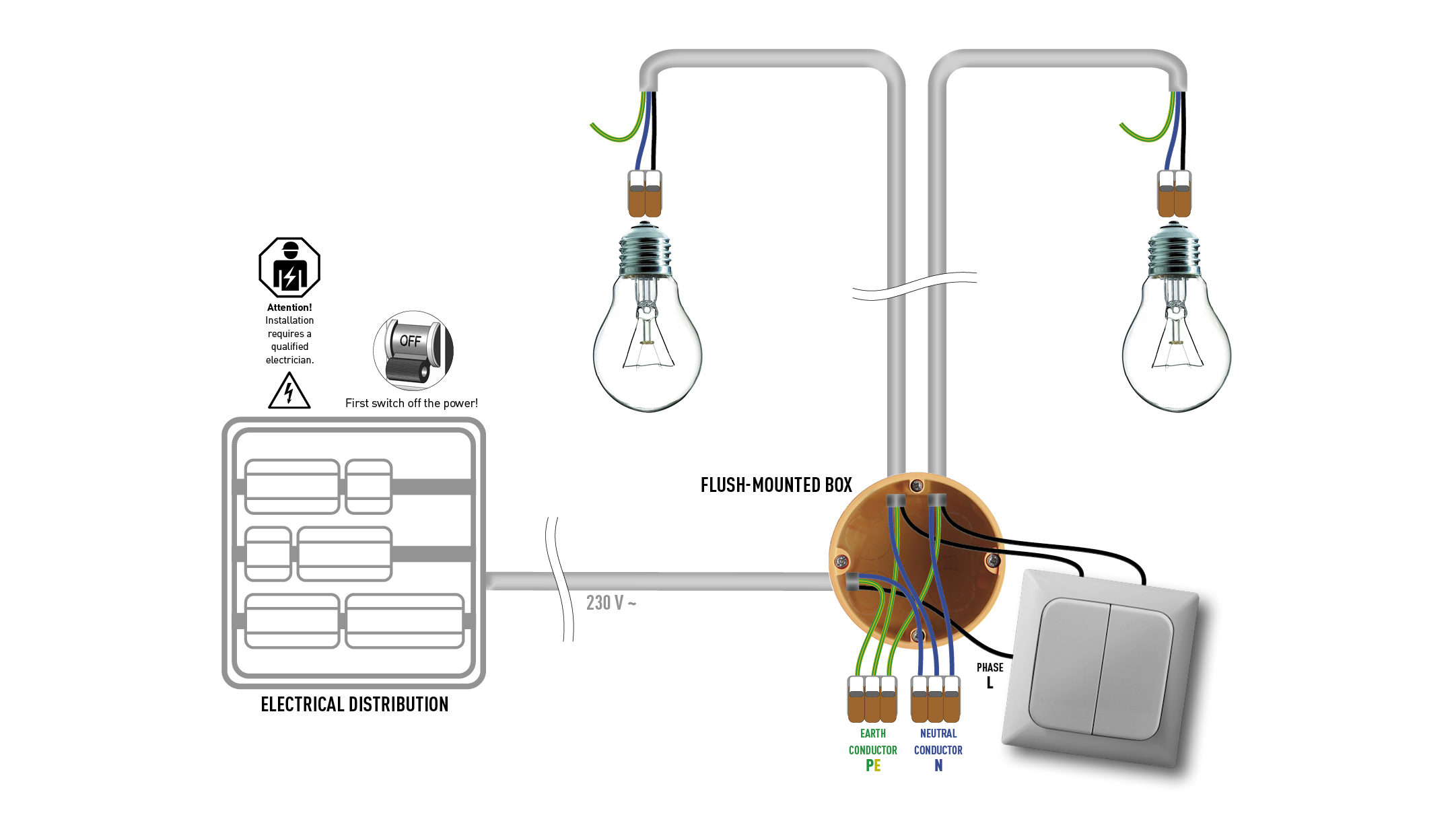The switch-off circuit
Everyone knows this function from a light switch, where you either switch the light on or off. This so-called "switch-off" serves as the simplest of the possible electrical circuits to switch an electrical consumer on a typically toggle switch with a rocker. This type of switch is also called an "off or changeover switch". It has two or three terminals for connecting the outer conductor L (phase) and a switched conductor (arrow). The latter conductor then leads to the consumer to be switched, e.g. a lamp.
In this respect, a circuit breaker merely interrupts the power supply and thus switches the consumer on or off. If a toggle switch is used for a switch-off, it should be connected in such a way that the rocker position is selected so that the consumer is switched on when the bottom is pressed and switched off when the top is pressed. Typically, an off switch is installed directly next to doors so that the light can be switched on directly when entering a room. Here is the illustration of the switch-off with switch box (fig. 1) and with junction box (fig. 2).
The changeover switch
By means of a "change-over circuit", an electrical consumer such as a lamp can be switched on and off at two switches from different mounting locations.
To enable this alternating switching of the consumer, there are two independent connection conductors between the two switches. Thus, the consumer can be switched on or off at each of the two switches. The respective switch position changes from one to the other connection conductor and the consumer is either supplied with current by one or the other connection conductor or not at all.
Such a change-over circuit is also called "corridor circuit" or "hotel circuit" and is therefore particularly suitable in e.g. long corridors, at staircases, in the bedroom or in a passage room with a switch at each door. In each of these cases, for example, the lighting is switched at different and often more distant switching locations. The lighting is always switched either On or Off, regardless of where it was switched on.
For a toggle switch, two toggle switches are usually used, each with three terminals on the back. Two of these terminals are marked with an arrow and the third terminal with "L". Two different types of cable are used for the wiring. A cable with three cores (type NYM-J 3 x 1.5 mm²) is used from the distribution to the first switch. Likewise for the wiring to the lighting. On the other hand, a four-core cable (type NYM-J 4 x 1.5 mm²) is used between the two switches.
The series circuit
A so-called "series connection" is when two electrical loads, such as lamps, can be switched independently of each other by a switch.
Unlike an off or changeover switch, a series switch has a centrally divided rocker switch. This means that one consumer can be switched on or off at each of the two rockers.
Series switching is made possible by having an outer conductor L (phase) on the switch and a separate switched conductor for each consumer or lamp.
Safety advice
The installation or tampering with the mains supply can lead to damage to equipment as well as serious injury or even fatal electric shock. For this reason, connection and installation may only be carried out by qualified personnel or a qualified electrician in a voltage-free or current-free state. Before starting installation work, check that no voltage is present, e.g. with a voltage tester.
Installation zones for power cables
Learn more about where power cables are routed in the walls.
Switch and socket installation
Learn more about installations with junction boxes, switch boxes or distribution boxes.
Comparing wireless systems
Compare the smart home systems Philips Hue, Casambi, EnOcean and Tuya in our overview.
Retrofit switches
Learn how to retrofit the Hidden Socket | Versteckdose® on existing wired switches.




